Florian de la Salle
Song of Molecules
Florian de la Salle: the Time of Matter
I believe myself to possess a most singular combination of qualities,
exactly fitted to make me preeminently a discoverer of the hidden realities of nature.
Ada Lovelace
I met Florian de la Salle for the first time in March of 2023 at the Montparnasse train station’s Brasserie L'Atlantique. I recall bustling waiters, the noise of the street, the plush atmosphere of the brasserie, red cylindrical lamps, and the impression of concrete art, which peeked my interest as I reviewed his work on the Documents d’artistes Nouvelle-Aquitaine website. There was a modernism that resonated with my work that spring on the “ruins of modern man."
Cette première impression s’estompe sous l'effet de l‘énergie débordante qu‘il développe en parlant de ses expériences et des effets qu'il sait provoquer. Assis à une petite table ronde, je suis vite captivé par la grande précision avec laquelle il mène son travail, par son plaisir inextinguible pour l'expérimentation pointue et ce qu'elle peut produire de beauté.
My first impressions vanished with the artist’s boundless energy in describing his work and the effects it occasions. Seated at a little round table, I was soon captivated by the great precision of the artist’s method, his endless pleasure in cutting-edge experimentation and the beauty it produces.
It’s not, of course, about “production” in the industrial sense, not that superficial, sedative beauty. This beauty acts like a pharmakon 1. Poison and cure, here the goal is making the molecular structure and its form perceptible, or bringing them into existence. Each form, sometimes discovered along winding paths of reason, examines the intrinsic aesthetic value of matter, as in the dyes of Landon Metz, who’s around the same age 2. “Look at these ceramic objects,” the artist suggests while showing me images from Les gouttes, “these are forms from encyclopedias I collect. During firing, the glaze comes off the edges and the white of the porcelain reappears. I then use them as models to draw on a sheet of Plexiglas producing monotypes.” Colored bricks in subtle hues. Objects from the Encyclopedia, an Enlightenment project that transformed knowledge into power…The glaze recedes like the sea from a form in the sand shaped at its edges3. Traces of a monobloc transfer, memory of a possible form of human mind.
He hurried to catch his train.
I remained pensive. Since we never have direct access to matter, what we perceive as such is the result of an encounter between a projection and its screen. During this encounter, the expectations of the one perceiving “something” strengthens the projection, and this releases energy reflecting what is to be seen, thus determining the density of the screen: a thin screen will reflect less matter than a thicker one. Looking at his work with blotting paper, I thought: if matter is to exist4, one must channel the flow of energy produced by the interaction expectation–projection–reflection. The essence of this practice is directing that flow.
We met again in Linazay the following month, in one of the two buildings at Frac Poitou-Charentes that the artist had turned into an exhibition space during his residency. The fields of rapeseed had already lost their yellow glow to precocious summer heat. At a 9-month residency for research and experimentation, begun in February 2023, the artist displayed his entire body of work. Pieces were arranged like figures on a study board of past creation. In the vast spaces of the site, I passed through a profusion of forms. The impression of formal continuity proves misleading, even though the cube and circle are present, even though the restored molds of Il pense en moi (2013) evoke op art. Organic elements, drawings, photography, woods, waxes, and plasters are to be found along with interactions with matter, with people the artist encountered, their memories, condition and know-how. This is sometimes explicit, as in Réaction, with 58 candles made of liturgical wax poured and molded in the form of cooling towers for nuclear power plants (produced in 2015 with Dominique Robin for the Biennale de Melle). In Linazay, I regularly found series of experiments seeking a form inhabiting materials.
Note the way he catalogues his work: in exhibiting a piece, he always accompanies it with a checked pattern, evoking the scientific precision of photos of archeological objects. Knowing he’s a chess enthusiast, I first see it as a piece of chessboard. Projecting my impression (game of chess) onto this small detail (the checked scale), the screen of artistic work reflects another sense: the failure of visual representation of the sculptural object through this form of photography. The attempt to represent the object through the image obscures its materiality. Instead, it’s the visuals that reflect an expectation for recognition that makes these objects exist. In C‘est pas du luxe (2012-), the artist makes a chess table each year. He sands these Duchampian tables down, introducing the notion of consumption, or vanitas.
Suddenly a common theme of the artistic process becomes clear to me. It seems that across these occasionally heterogenous projects, the artist works to make the time inherent in matter perceptible. Time has no shape. It appears in transformations, soliciting memory. Yet, if we seek to make what passed present, what appears is not time, but the failure of representation.
For example, 4810 m, a copper coil in a wooden box. A number indicates the height of Mont Blanc. But as the label on the box suggests, it’s also the distance between 183, Cours Berriat and 5, Place de Lavalette, in Grenoble. One has to believe it. The artist adds no video documentary, as Francis Alÿs did in 2003 for The Leak, in Paris, in which he walked with a punctured pot of paint releasing a light white thread. The copper coil is not the recording of a performance. It does not “store” time, it evokes energy and magnetism. Like a personification of the artist and his practice, it suggests a play of winding- unwinding, with all its implied twists. This feature reappears in the rolls of VHS tape braided into rope during his visit to the Corderie Royale in Rochefort [image 8]. The artist tackles the container, probing the object to uncover what animates it. A series of transformations invites us to acknowledge that perception only reconstitutes what’s there to be seen. The same idea applies to the sinuous lines he etches in Les poutres de Massais (2016). Here one might see Bauhaus totems. An aspect change4 transforms them into encoded movement, the inscription of time. From the phenomenological viewpoint, the artist “generates” time with matter5.
Besides a sense of surrender, the operation requires (as he learned from his parents in research science) a precise framework. Keenly sensitive to the details, the artist probes what this matter may contain. Consistent, unrelenting, in his words, he’s able to “make the invisible visible at the molecular level” through his work. Then, in order to “paint without painting,” he began experimenting with porcelain cylinders and saturated solutions of salts6 following this protocol: “I prepare 10 containers in which I dilute an initial solution, reducing the concentration of salt in increments of 10%. The containers are filled such that the submerged object–a porcelain cylinder–is only submerged by a centimeter. During this process, color does not appear, only a light trace of solution arises through capillarity. The particularity of the porcelain work comes from heat: a second firing makes the different colors of salts visible7.” The title, Farbe macht Feuer, translates to “color makes fire.” Reading the title aloud, three subjects might emerge: “Farbe Macht Feuer,” or “Color Power Fire.” Here’s a very dense screen that brings the materiality of color into existence: 900 cylinders of different hues, placed on the ground like the terra cotta troops of Qin Shi Huangdi8, the whole surrounded by a landscape painted on an enormous piece of blotting paper dipped in ink, revealing, again by capillary action, nuances of color at a molecular scale.
The wordplay in the title, the game of chess, the reference to a porcelain army–suddenly it seems as if the search for time inherent in matter takes us somewhere beyond merely “painting without painting.” Amidst all his pieces, it seems that the artist is conducting research on the particular aesthetic aim of power, as in Foucault: a relationship between knowledge and disciplinary techniques. Indeed, his work concerns the body. We’re in the middle of a play of scale (échelle) and a game of chess (échec)—size of the stakes, failure of identification; level of importance, failure of attribution. What we perceive as representing matter is no more than a sign of time’s passage, one that can’t be recovered by technological knowledge. In this light, conducting the experiment of art is always a learning process come of lost time9. During the process, the never-seen time of matter makes an appearance as the artist changes aspect. American artist Jeanne Dunning took a photograph dubbed Untitled Hole (1988) featuring a hairy nostril photographed in extreme close-up such that it’s turned upside-down. With an aspect change, the respiratory hole becomes a crater, a lake, a well—you can get lost in it. The artist mentions Dunning as a reference in a small photograph of her hand, wounded during the process of creation.
Turning around, it’s still warm outside. The birds and the wind rustle in fields of rapeseed. Sometimes a car fills the air with the noise of tires adhering at great speeds to asphalt before breaking free. I hear it as if my senses were heightened by the visit. Inside, the light and reflections of windows trace a pattern on the ground—another possible depiction of the time of matter? All the artist has to do is channel it.
Thinking about lived experience, I realize that matter, like that of words, makes time appear as we play with the structure that bring it into existence. Just as in chess one must transcend the arrangement of pieces on the board, meaning is formed when we manage to abstract ourselves from presence, when we forget the desire for representation. One must project what comes not as imaginary future, but as what manifests itself precisely in the process of playing the game. This implies being able to change the aspect of the pieces, as their arrangement, movement and values. It’s only in accepting the lost share of experience that we occasionally regain the meaning of its matter11. Seen in this way, the artist’s enthusiasm for experimentation noted at the very beginning of our meeting becomes an invitation to “make way for new, gentler, more joyful possibilities of life12.” De la Salle’s art suggests we “forget in order to see.”
Notes :
1 Cf. definition and philosophical origins at https://arsindustrialis.org/pharmakon, consulted August 15, 2023.
2 Sennewald, J. Emil. “Un pas de peinture: Landon Metz.” In Prix Jean-François Prat 2019, p. 34–45. Paris, 2019.
3 Foucault, Michel. The Order of Things: An Archeology of the Human Sciences, Routledge, 2002, p.422: “…man is an invention of recent date. And perhaps one nearing its end. If [these] arrangements were to disappear as they appeared (...) then one can certainly wager that man would be erased, like a face drawn in the sand at the edge of the sea.”
4 Note that existence is epistemologically related to appearance.
5 Cf. Melzer, Tine, Atlas of Aspect Change. Zürich, Rollo Press, 2022.
6 Cf. Merleau-Ponty, Maurice. La Prose Du Monde. Paris, Gallimard, 1969, p. 174
7 Cf. Jeannès, Michel. “Florian de la Salle ou le subjectif entre parenthèses.” In ST9 – Insolants: Florian de la Salle. Lyon: Les éditions Solarium Tournant, 2021.
8 De la Salle, Florian, “Colorer,” https://dda-nouvelle-aquitaine.org/Colorer, consulted on June 30, 2023.
9 Cf. https://www.nationalgeographic.fr/histoire/comment-larmee-de-terre-cuite-de-lempereur-qin-a-t-elle-ete-fabriquee, consulted on August 15, 2023.
10Referring to the relationship between signs and matter as developed by Deleuze, Gilles, in Proust et les Signes. Paris: PUF, 2014. The idea can’t be developed here. It merits its own analysis within the work of Florian de la Salle.
11In the French text, the term “matière,” translated throughout as “matter” retains two senses, that of “substance” and that of “contents."
12 Merlin, Matthieu, “Foucault, le pouvoir et le problème du corps social,” in Idées Economiques et Sociales, 155-1, 2009, p. 51‑59, ici p. 59.
Translation: Elaine Krikorian
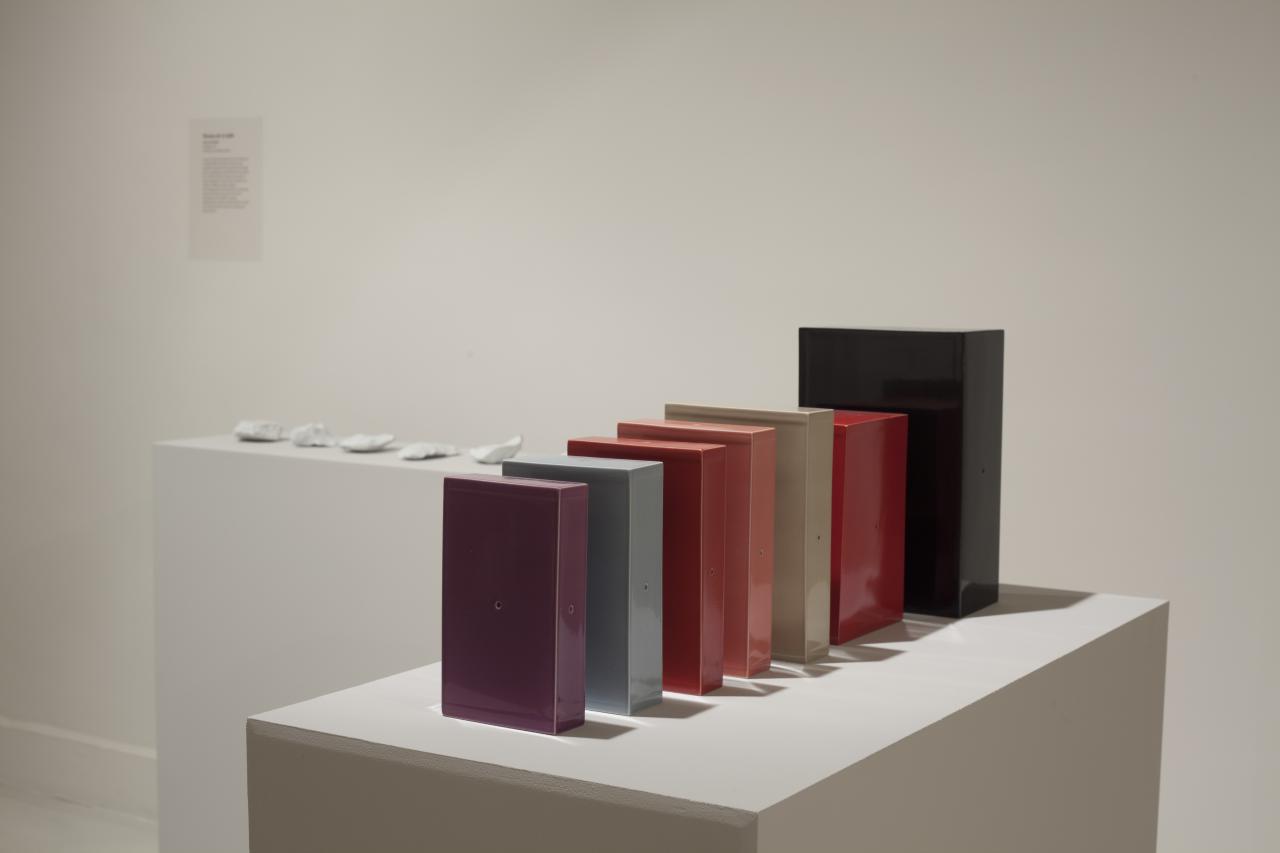
Porcelaine, émail, 23 volumes allant pour le plus petit 3,5 x 18 x 11 cm au plus grand 104 x 32 x 26 cm
Travail de recherche sur la couleur réalisé à l’ENSA Limoges dans le cadre de la residence de recherche Kaolin.
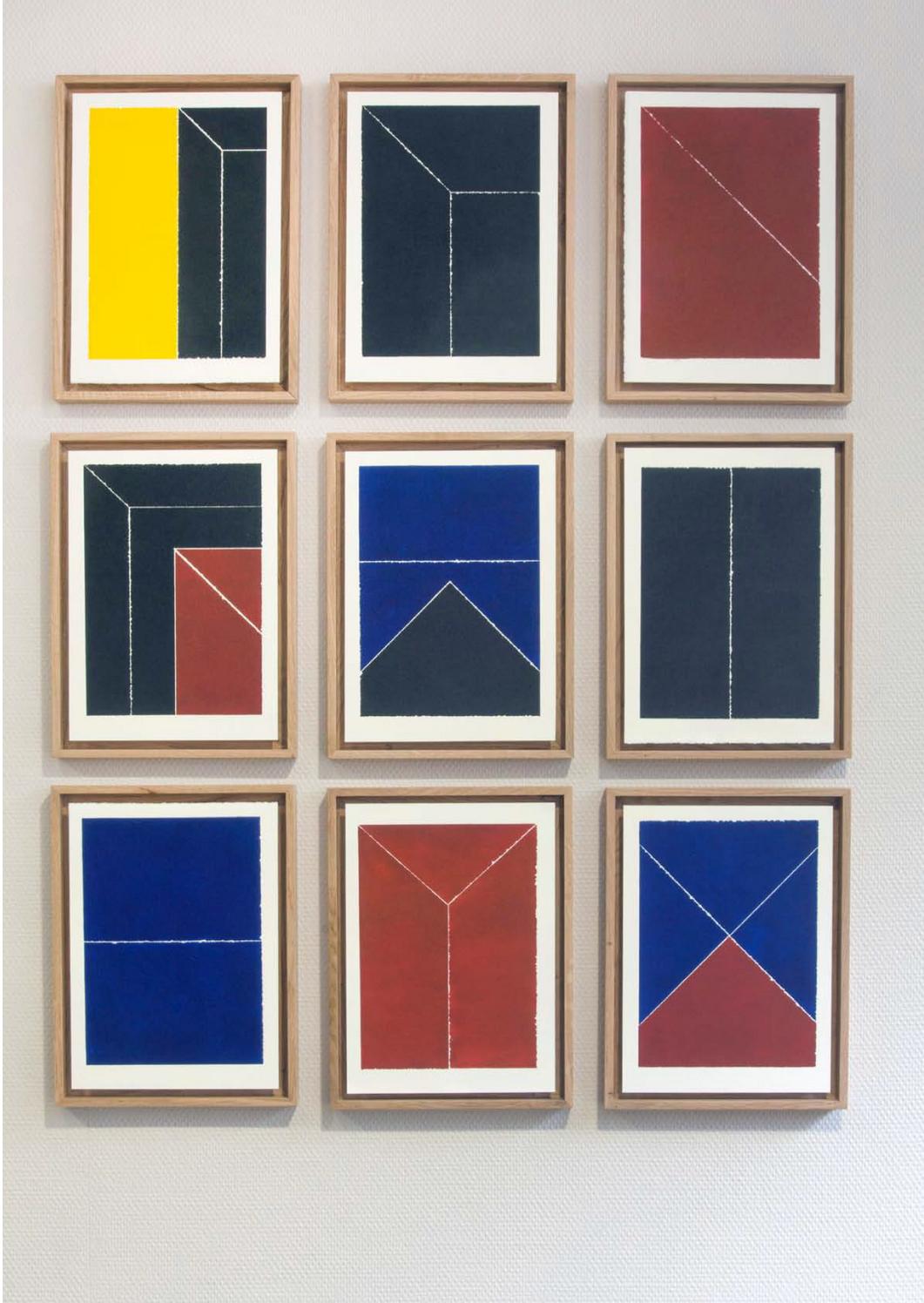
papier Hahnemühle 300 g, monotype et caisse américaine en chêne, 33 x 23 cm chacun
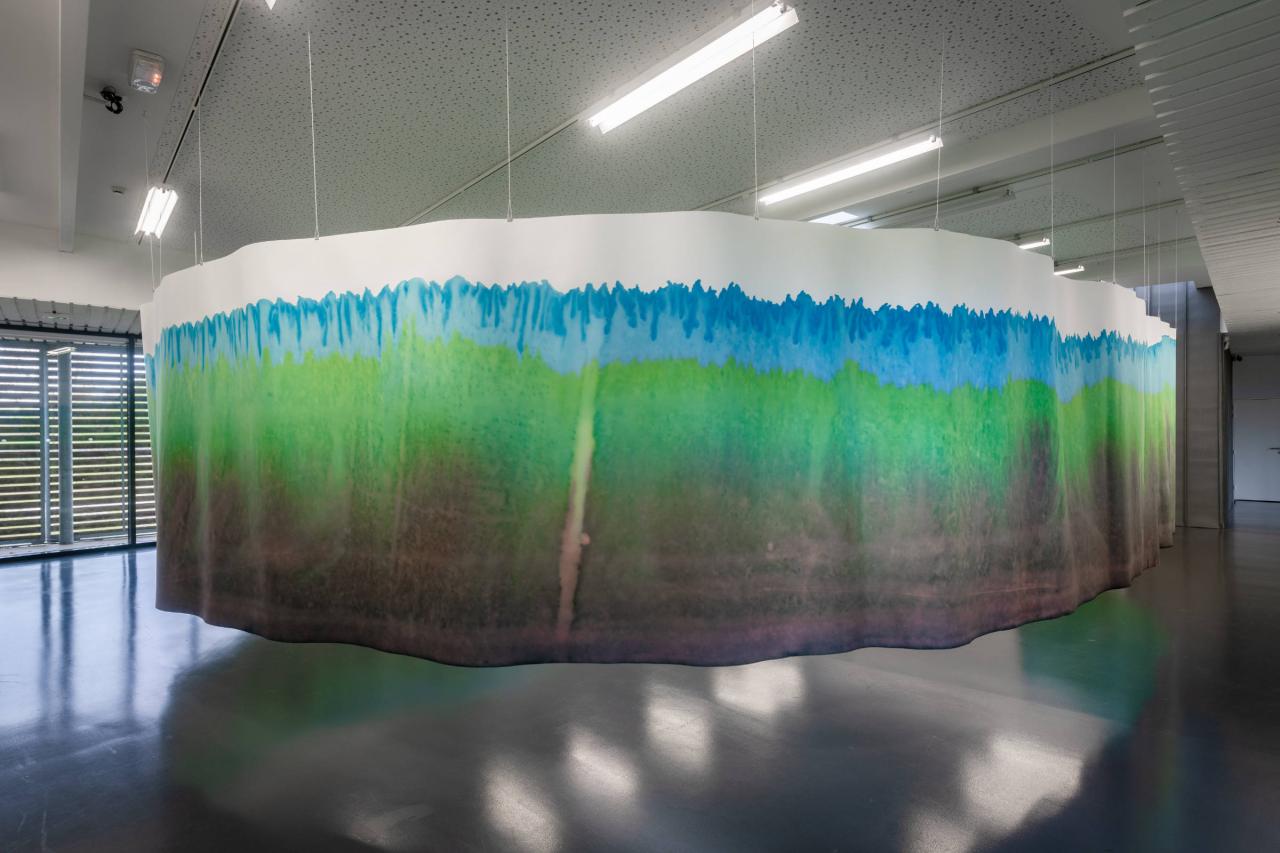
30m x 2m, Chromatographie d’une encre noire industrielle
Crédits photographiques : Yann Gachet
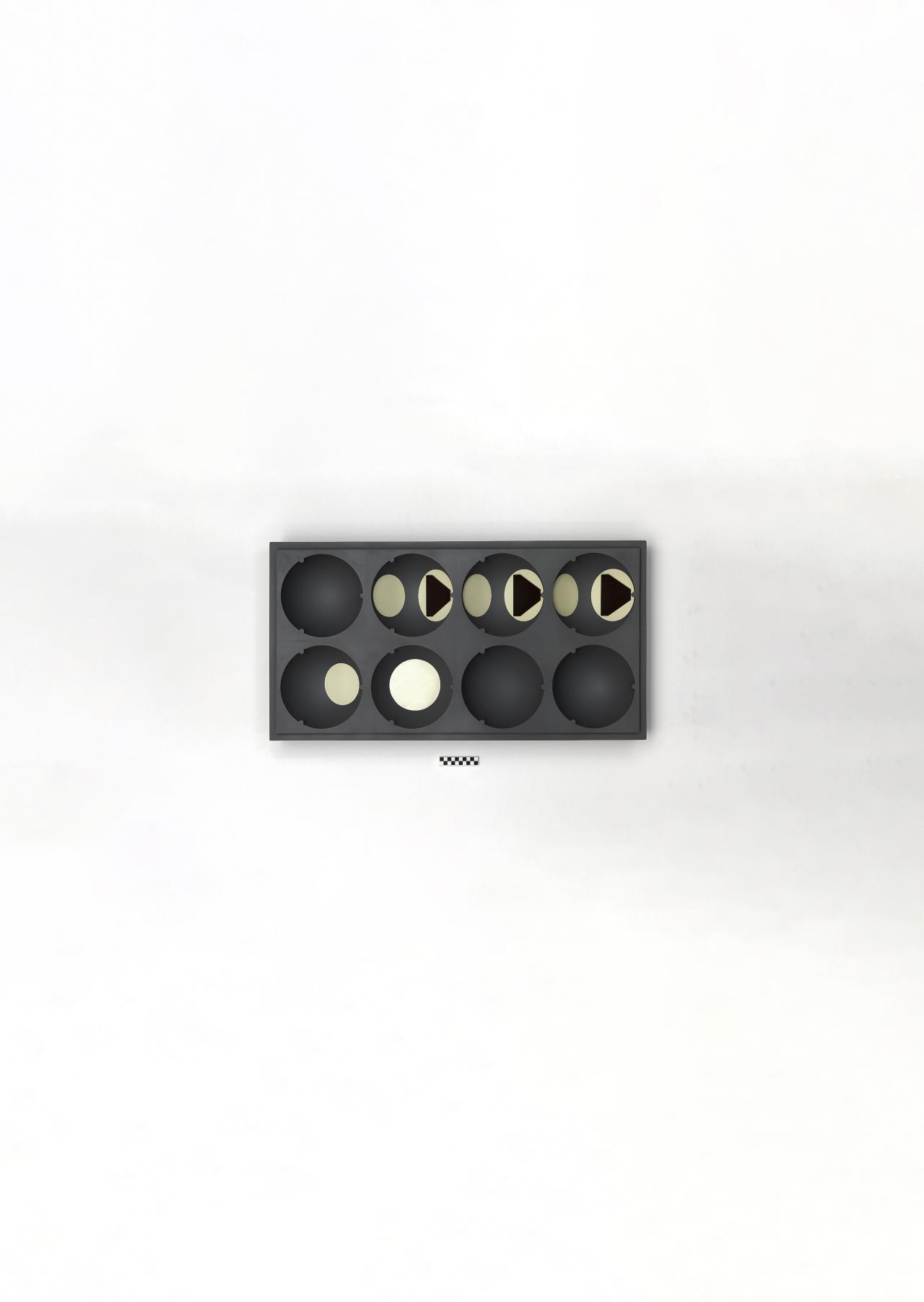
Moule en résine, 95 x 49,5 x 11,5 cm - 11,3 kg
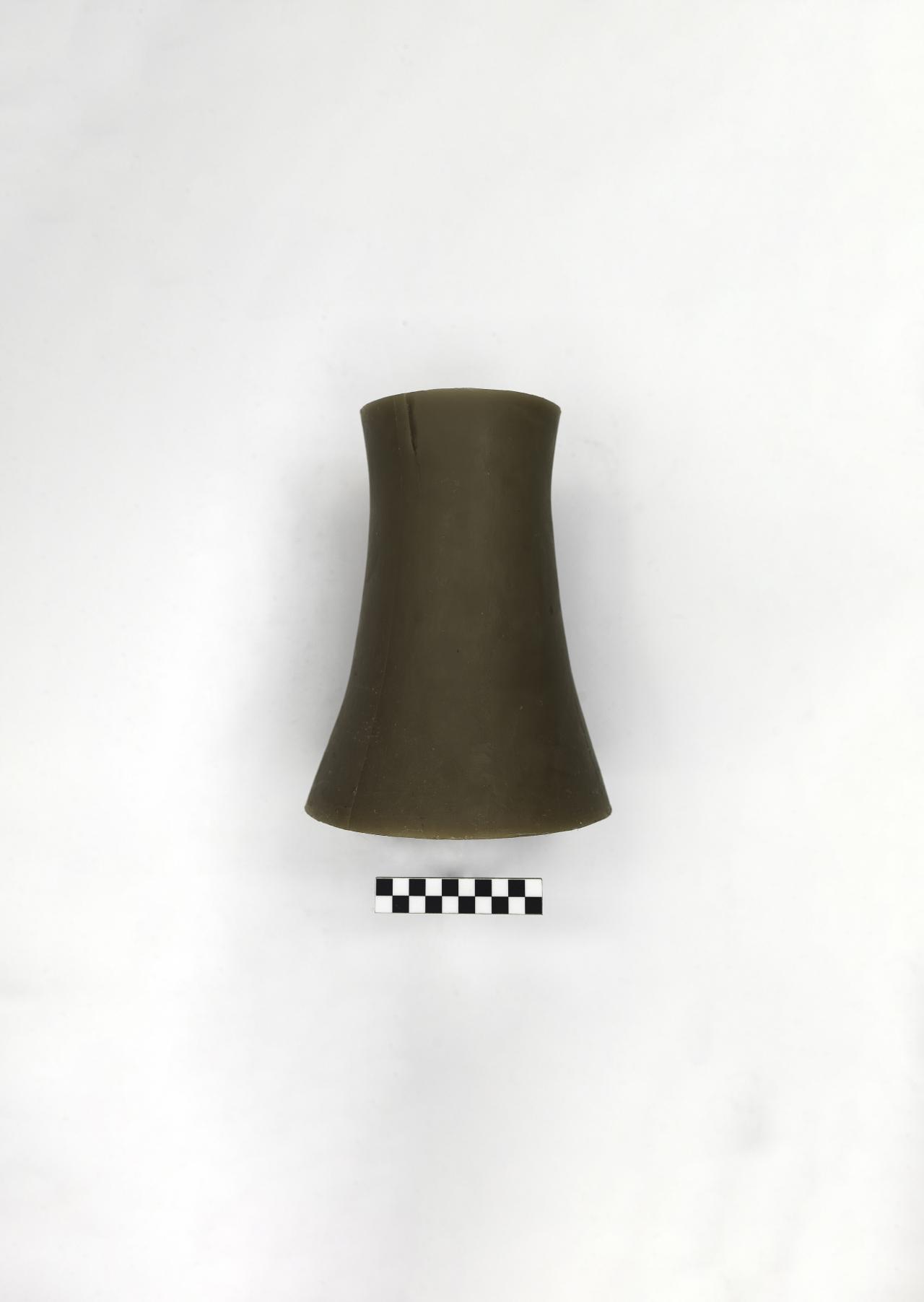
58 bougies en cire liturgique coulées et moulées
Hauteur 28 cm - 23 cm Ø - 4,79 kg
Réalisé en collaboration avec Dominique Robin à l’occasion de la Biennale de Melle
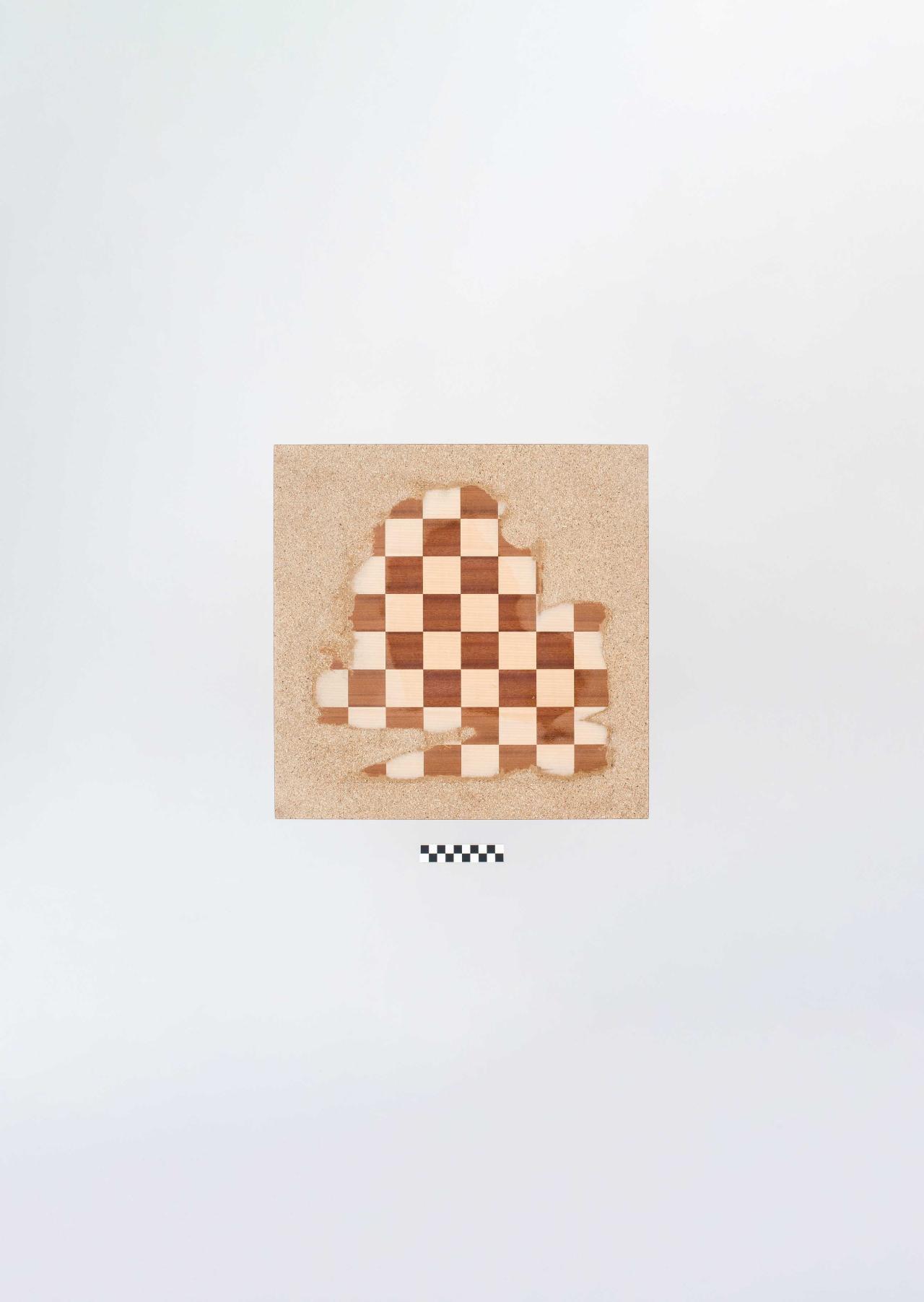
Bois, 45 x 45 x 76,5 cm - 5,7 kg
Issue de Assembler, 2021-2010
Série de 150 photographies encadrées, 22 x 32 cm
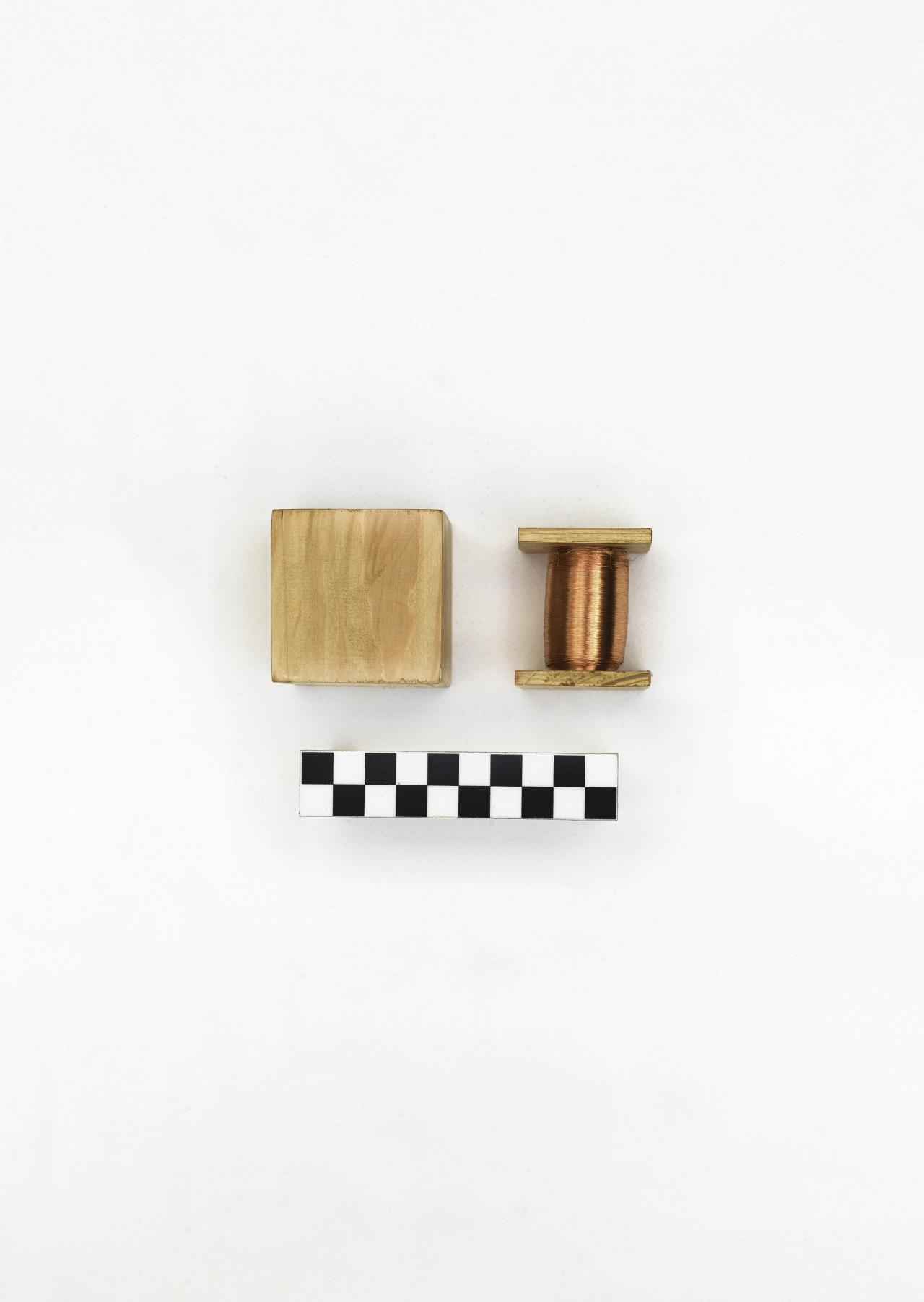
bois, fil de cuivre, étiquette, 5,5 x 5,5 x 5,5 cm - 137 g
Inscription sur l’étiquette : du 5 place de Lavalette, Grenoble au 182 cours Berriat, Grenoble
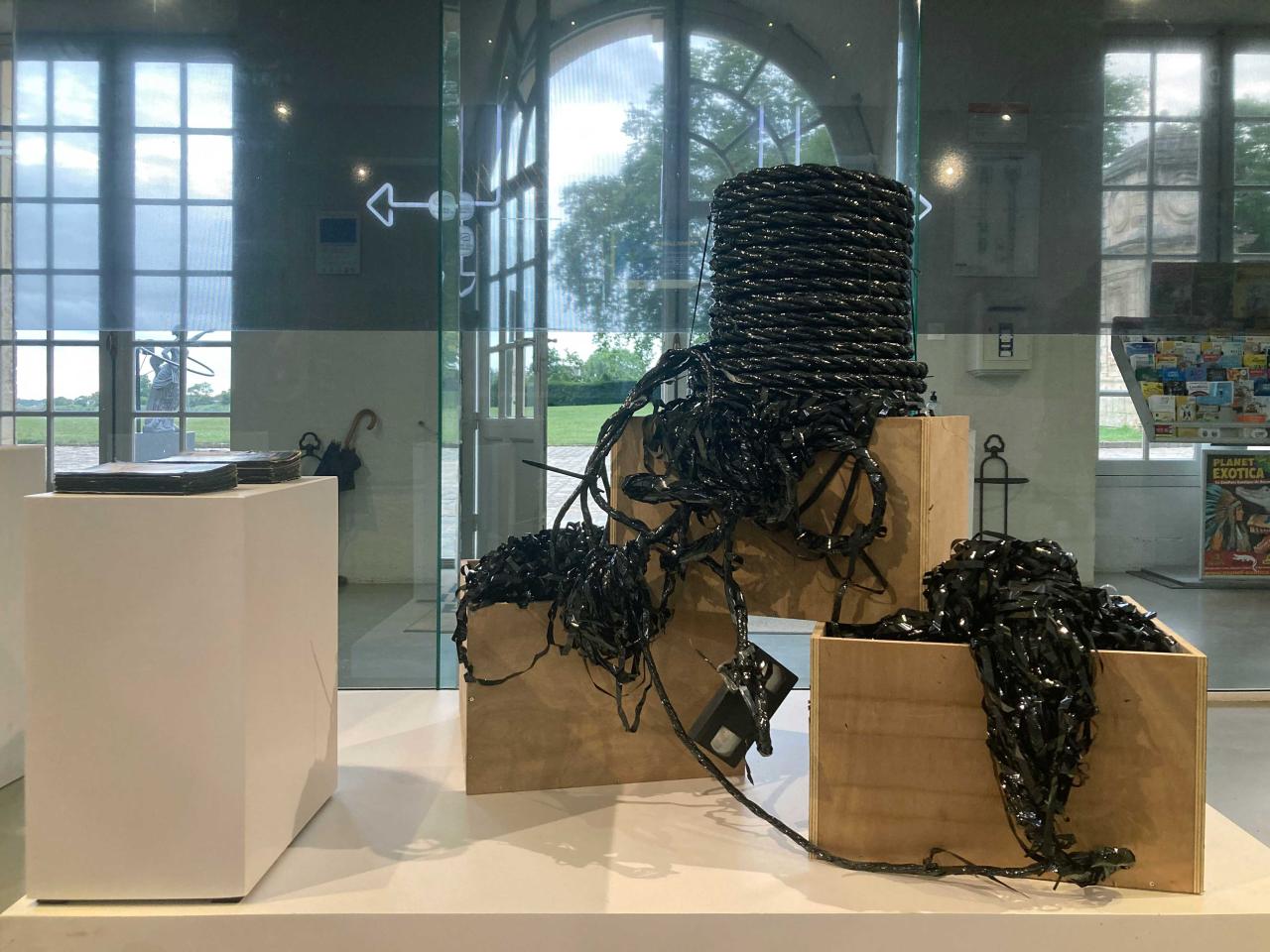
600 cassettes VHS, cordage avec les bandes VHS 70m de long, 3 caisses en bois, une édition en deux tomes des jaquettes. Réalisé à la Corderie Royale de Rochefort

5 poutres en chêne, cire liturgique, 200 x 10 x 10 cm
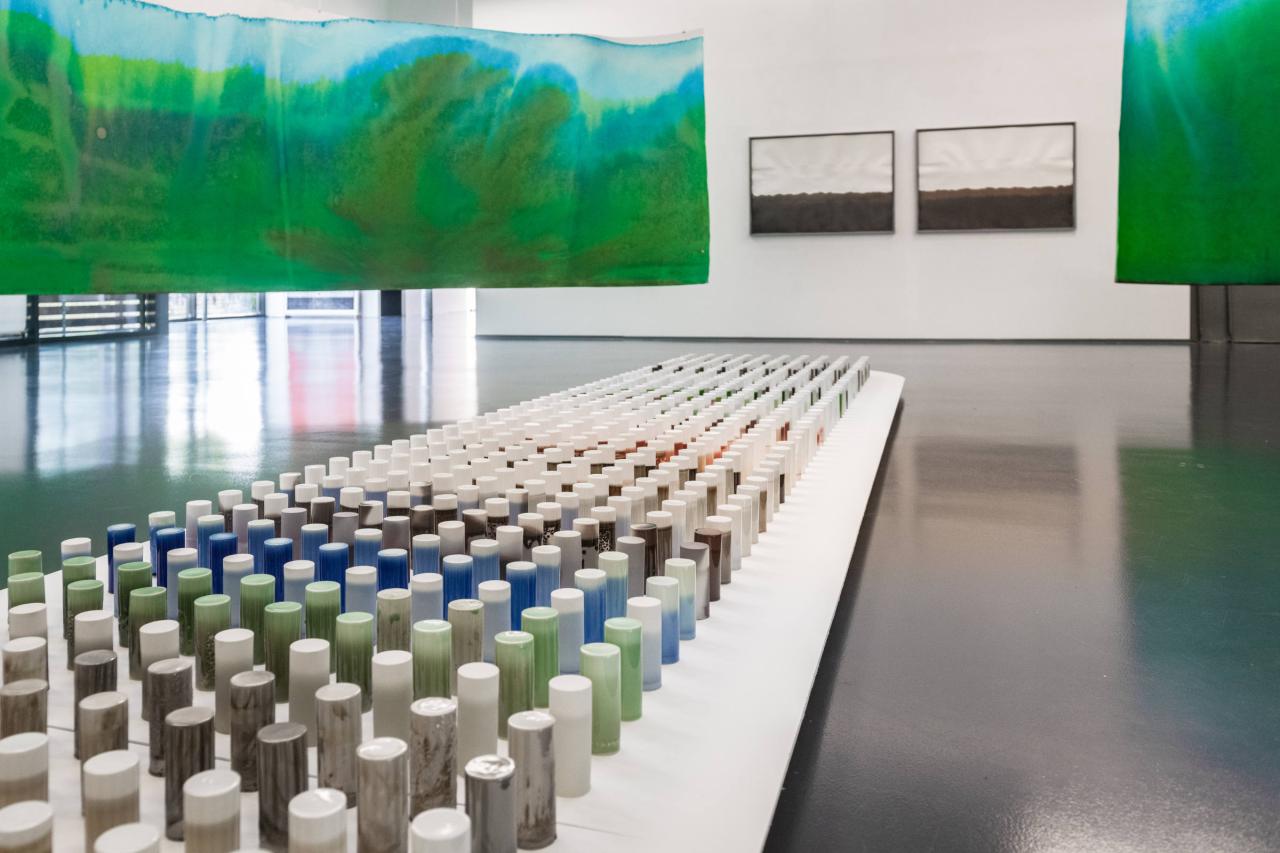
600 cylindres en porcelaine, hauteur 10 cm - 4 cm Ø
Crédits photographiques : Yann Gachet
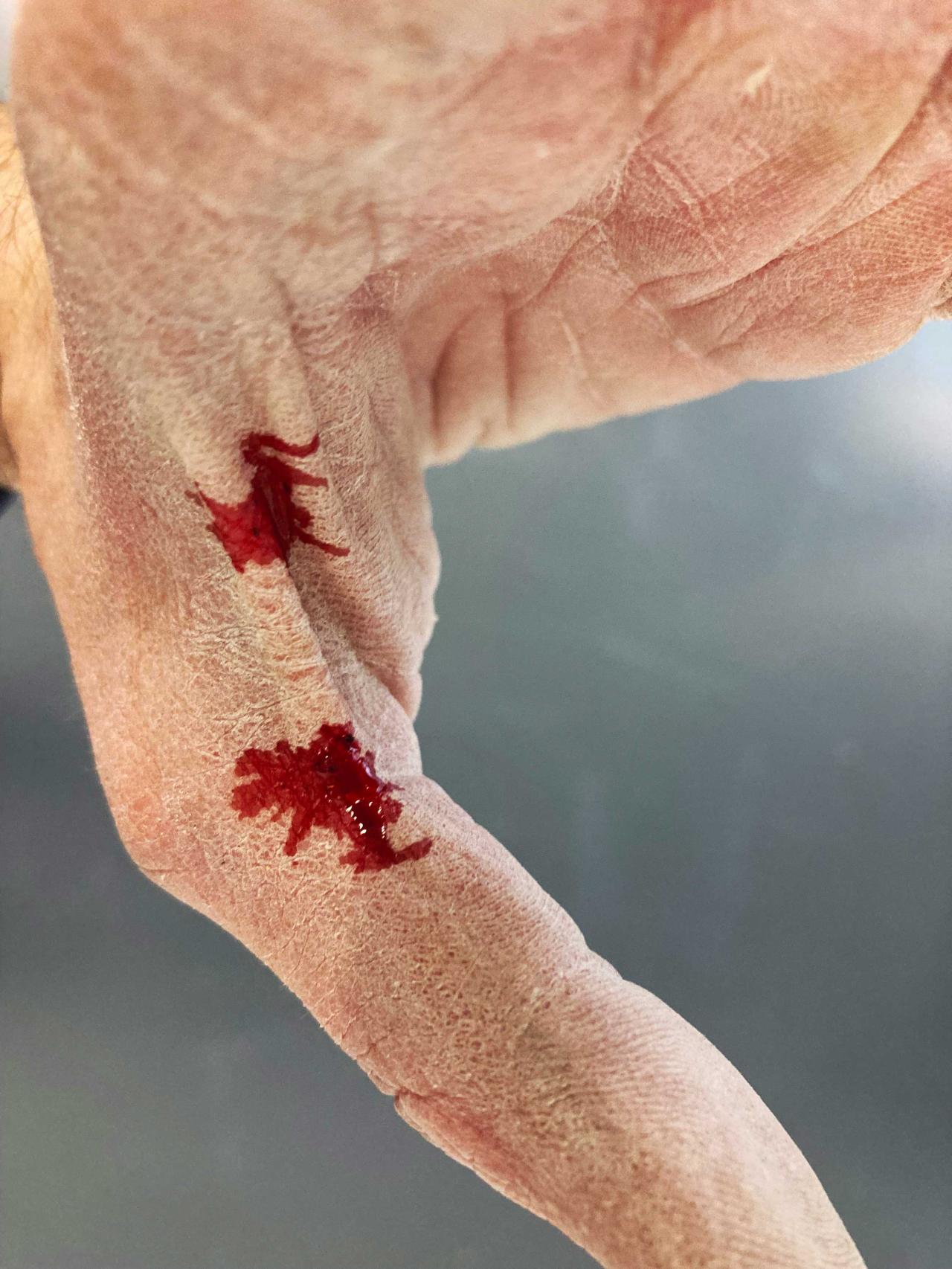
Tirage photographique, cadre aluminium, 13 x 17 cm